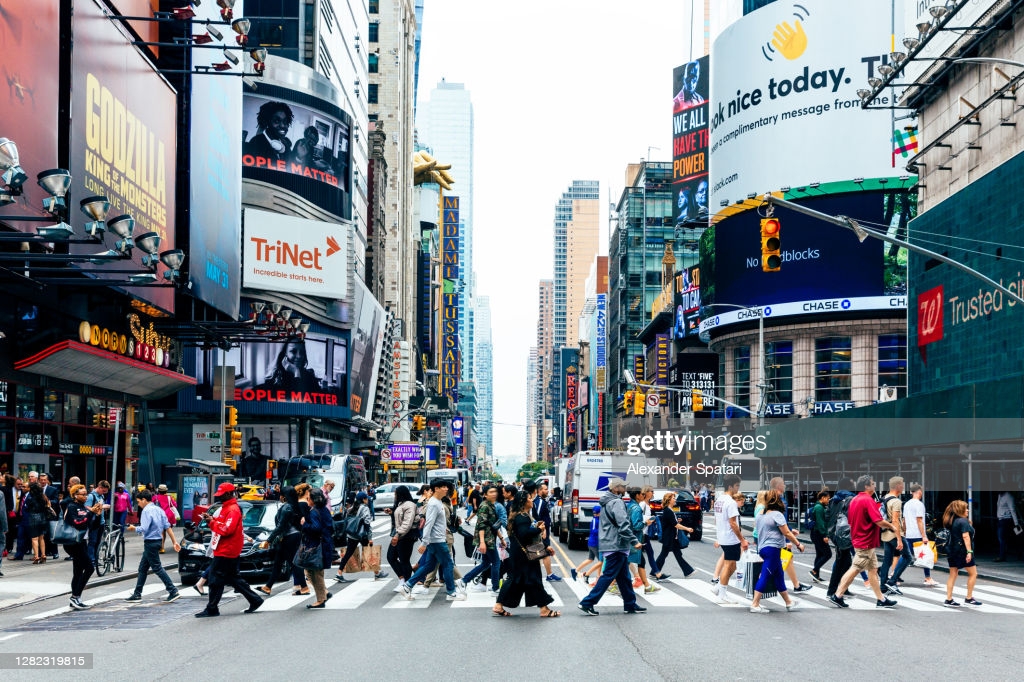Will the US economy continue a brisk recovery?
The US is enjoying a brisk economic recovery thanks to substantial policy support and a quick vaccine rollout. But speed may not win the race when it comes to creating a sustainable rebound.

The US economy looks set to record growth of near 7% this year, with GDP set to pass pre-pandemic levels in the next quarter or two. Photo: New York City, USA.
The US economy looks set to record growth of near 7% this year, with GDP set to pass pre-pandemic levels in the next quarter or two. That’s much better than most other nations and is due to a fast vaccine rollout and significant policy support. All countries have eased policy but the US has been more aggressive on two fronts. On fiscal policy it has favoured direct fiscal support, such as cash handouts to residents, over indirect support, such as loan guarantees. Not only has the US done more here at around 25% of GDP at the moment, but there could be further action in the form of a USD 1.2 trillion infrastructure plan, and an even bigger infrastructure plan if the Biden Administration can get the measure through a divided Senate.
And, while these initiatives are said to be costed, unlike prior coronavirus packages, passing corporate and individual tax hikes through Congress is no easy matter. Even in coming years, the Biden budget still assumes that deficits will be running at over 5% of GDP as far as the eye can see, which is high in historical terms. On monetary policy too, the US has been able to be more expansive as the Fed has had significant room to ease; many others have not, at least in terms of scope to cut policy rates.
All told, were the post-coronavirus recovery a race, the US would be the hare, with much of the rest of the world tortoise-like. But, as we know, the slow tortoise wins the race in the famous fable, not the hare. That could happen here if the numerous spillover effects from US policy easing, plus other external impediments force policymakers to apply the brakes both soon and in a determined way. Rising inflation provides evidence of the overheating risk, with CPI inflation now up to 5% and the Fed’s preferred PCE price measure now well above the 2% target at 3.9%.
Of course, the Fed is now aiming for inflation to be above the 2% target for a limit ed time, so that it can achieve an average 2% level. This too is another sign that the Fed has pushed the monetary-easing boat out more than most other countries. But just how high the Fed wants inflation to go, and for how long, is hard to say. FOMC members remain convinced that inflation will be back to target soon, with the median forecast for PCE prices set at 2.1% next year, after an expected 3.4% this year. Some decline does seem likely as initial post-pandemic supply-chain disruptions ease and the post-lockdown surge in demand abates. But there are signs that inflation will become more entrenched, such as the surge in house prices that will likely show up as higher rents in price measures over time as new rental contracts are agreed. Wage pressure could also add extra impetus as there have been signs that the labour market might be tighter than the Fed originally expected coming out of the pandemic.
Mr. Steve Barrow, Head of Standard Bank G10 Strategy said: “We think that inflation will prove more stubborn and PCE prices next year will still be closer to 3% than 2%. But the Fed is not likely to panic now. We look for members to signal at the September meeting that they are ready to consider tapering the USD120bn of monthly bond purchases to start the long road back to tighter monetary conditions, but it won’t be until the December meeting that it signals a schedule for tapering starting in 2022. Meantime, we see treasury yields moving higher, to above 2% for 10-year yields by year-end as economic momentum builds and inflation remains stubbornly high. A rise in treasury yields might be expected to lift the dollar but we don’t see it this way. For a start, yields elsewhere will likely rise and, whereas the Fed was ahead of the pack in tightening during the last cycle, it will be in the middle of the pack this time. In addition, high inflation means low real rates. Elsewhere, inflation seems more becalmed and real rates could rise relative to those in the US and so elevate other currencies against USD. And, the prospect of a reasonably synchronised global recovery should fuel riskier currencies and leave safe currencies such as USD on the backfoot. Hence, we see EUR/USD up to the 1.30-1.40 range over the next year or two, GBP/USD climbing to 1.50-1.60, and USD lower against other G10 currencies”.








